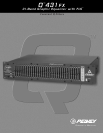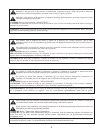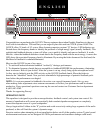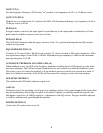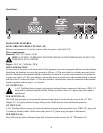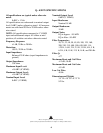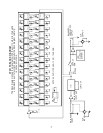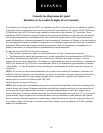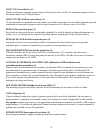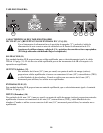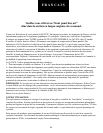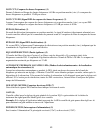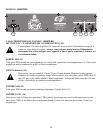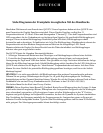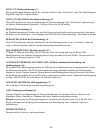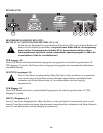
3
E N G L I S H
Congratulations on purchasing the Q431FX! Peavey engineers have taken Graphic Equalizers to the next
level with its introduction. We trust that you are eager to place this unit into YOUR system ASAP. The
Q431FX offers 31 bands of 1/3 octave filters featuring superior constant “Q” devices. LED indicators are
located above the frequency bands to identify the presence of a high energy signal (usually feedback). This
sophisticated feedback detector system will allow you to quickly identify and remove feedback. It works
like this: when the feedback detection circuit detects the frequency band with the most energy, it causes the
LED above the associated frequency band to illuminate. By moving the fader downward for that band, the
likelihood of feedback is reduced/eliminated.
Most use the Q431FX in one of two ways:
1. To catch and reduce/eliminate feedback “on-the-fly” during a performance.
2. To determine frequency bands that are susceptible to feedback BEFORE the performance, eliminating
them in advance. How do you do this? After the system is set up, slowly bring up the microphone levels.
As they start to feeback, note the LED activity on the Q431FX feedback bands. Move the faders to
decrease the “identified” bands. Now you have eliminated a high percentage of potential feedback prob-
lems before the performance even begins!
NOTE: It is not uncommon for feedback to be active over several frequency bands. Also, go easy
when making fader adjustments since extreme movements will affect your performance and be counter
productive. If any operational questions come up, be sure and contact our Customer Service department
at (601) 483-5365.
Thanks for supporting Peavey!
OPERATION NOTE
This equalizer is designed to provide room equalization, feedback control, and system tone control. No
amount of equalization will correct an acoustically bad room/mic/speaker arrangement or completely
correct the response curve of a poor loudspeaker.
Always begin with all sliders in the “0” position and avoid excessively cutting large segments of the audio
passband, as this will limit the system’s dynamic range.
Exercise caution when attempting to boost equalization below cutoff of the speaker system. Typical sound
reinforcement enclosures are not designed for 20 Hz performance and transducer damage could result.
1
2
6
8
7
3
4
9
5



